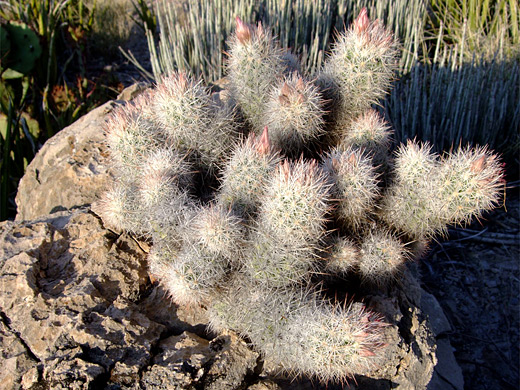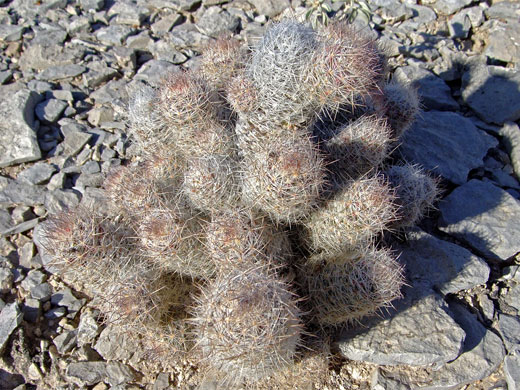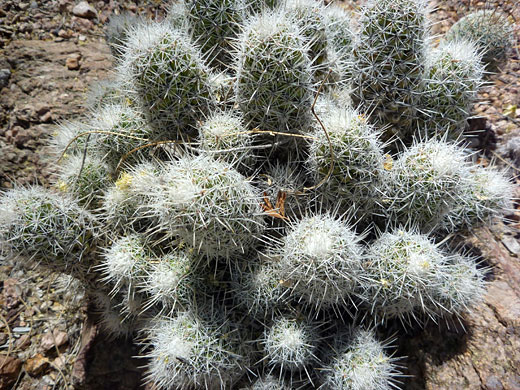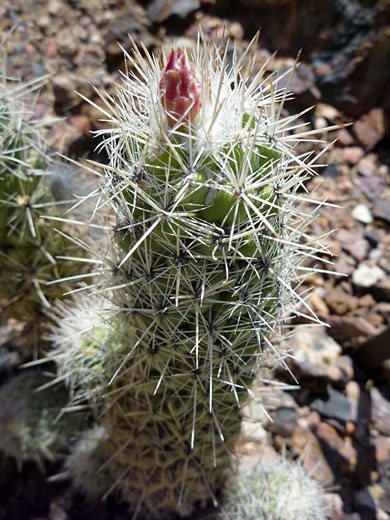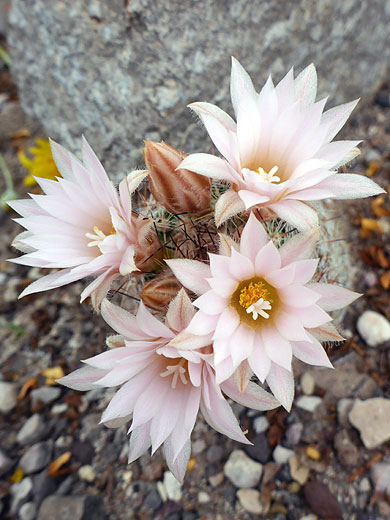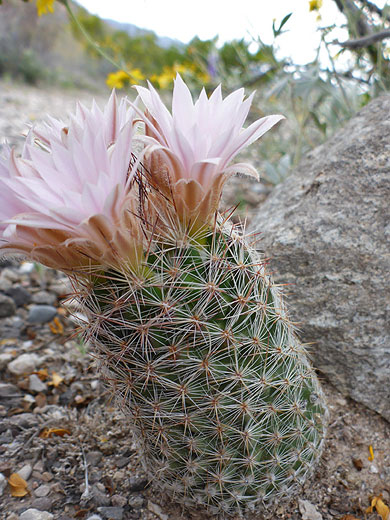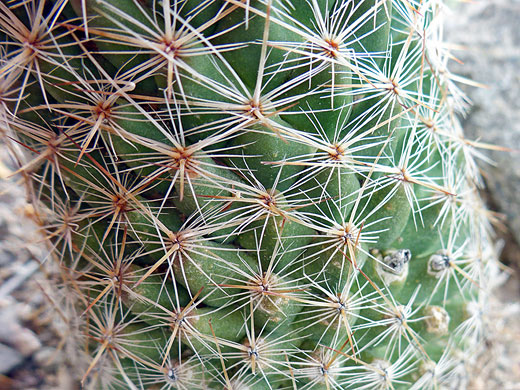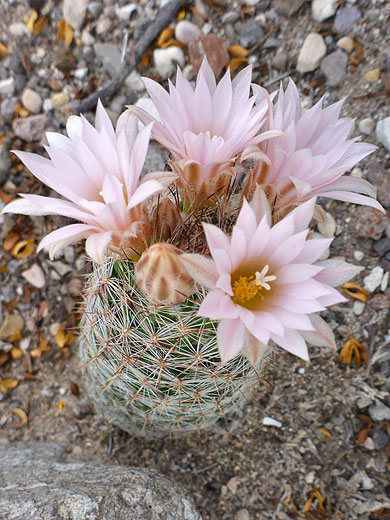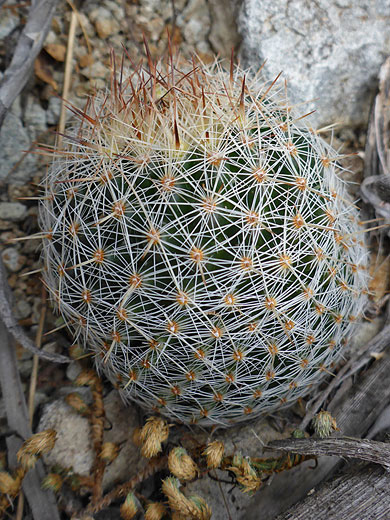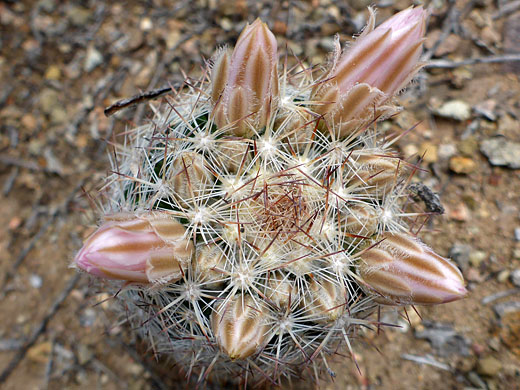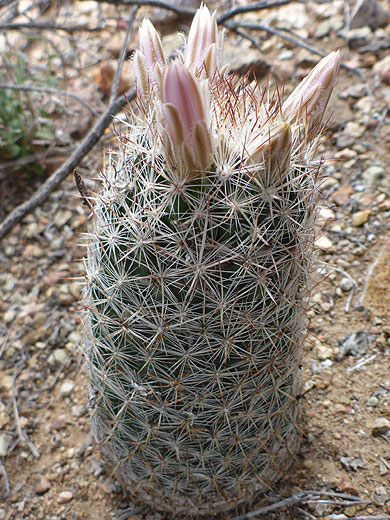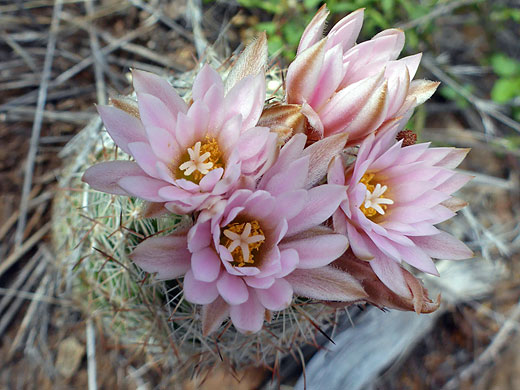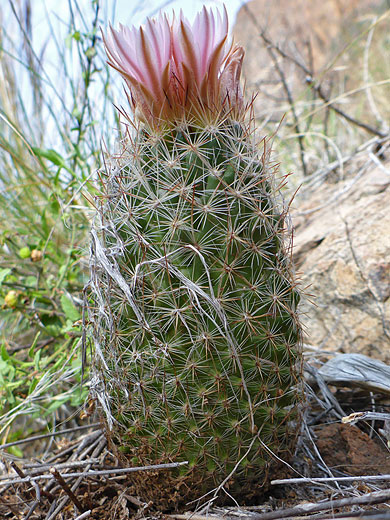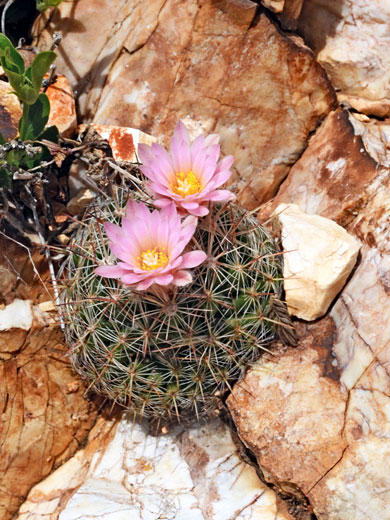Scientific name:
Escobaria tuberculosa, coryphantha tuberculosa
Common name:
Cob beehive cactus, white-column foxtail cactus, white star
Range:
South New Mexico, far west Texas
Form:
Clusters of small globes or cylinders
Habitat:
Grasslands, scrubland, pine-oak woodland; elevations to 6,000 feet
Flowers:
Pale pink, white or lavender, with darker centers, blooming from May to August

Distribution map for escobaria tuberculosa
Also classed as coryphantha tuberculosa, escobaria tuberculosa forms small spherical or cylindrical stems, usually around 1 inch in diameter and 2 to 3 inches in height, which readily branch to create clusters of up to 50 members, all covered in a dense lattice of short white or grey spines. In some cases though, the stems remain solitary, and grow larger, up to 7 inches tall and over 2 inches across - sometimes classed as a variety, var varicolor. These plants are generally found on volcanic soils, while clusters are favored in limestone areas.
There are between 15 and 40 radial spines and (usually) five central spines (three angled upwards, two less often one, spreading), longest about 3/4 of an inch; on pronounced tubercles, these often largely or entirely hidden by the spines, which are pale gray or pale brown in color. Central spines, thicker as well as longer as the radials, are darker at the tips.
White or pink flowers appear at the top of each stem during late spring and summer, between 1 and 2 inches across. The outer tepals have a brown stripe on the undersurfaces, and their margins are strongly fringed. Stamens have pale yellow filaments and orange-yellow anthers. Stigma lobes, four to six, are white. The egg-shaped fruits are normally bright red, less often greenish, and the withered petals are retained well into late summer.
There are between 15 and 40 radial spines and (usually) five central spines (three angled upwards, two less often one, spreading), longest about 3/4 of an inch; on pronounced tubercles, these often largely or entirely hidden by the spines, which are pale gray or pale brown in color. Central spines, thicker as well as longer as the radials, are darker at the tips.
White or pink flowers appear at the top of each stem during late spring and summer, between 1 and 2 inches across. The outer tepals have a brown stripe on the undersurfaces, and their margins are strongly fringed. Stamens have pale yellow filaments and orange-yellow anthers. Stigma lobes, four to six, are white. The egg-shaped fruits are normally bright red, less often greenish, and the withered petals are retained well into late summer.
All Contents © Copyright The American Southwest | Comments and Questions | Contribute | Affiliate Marketing Disclosure | Site Map


